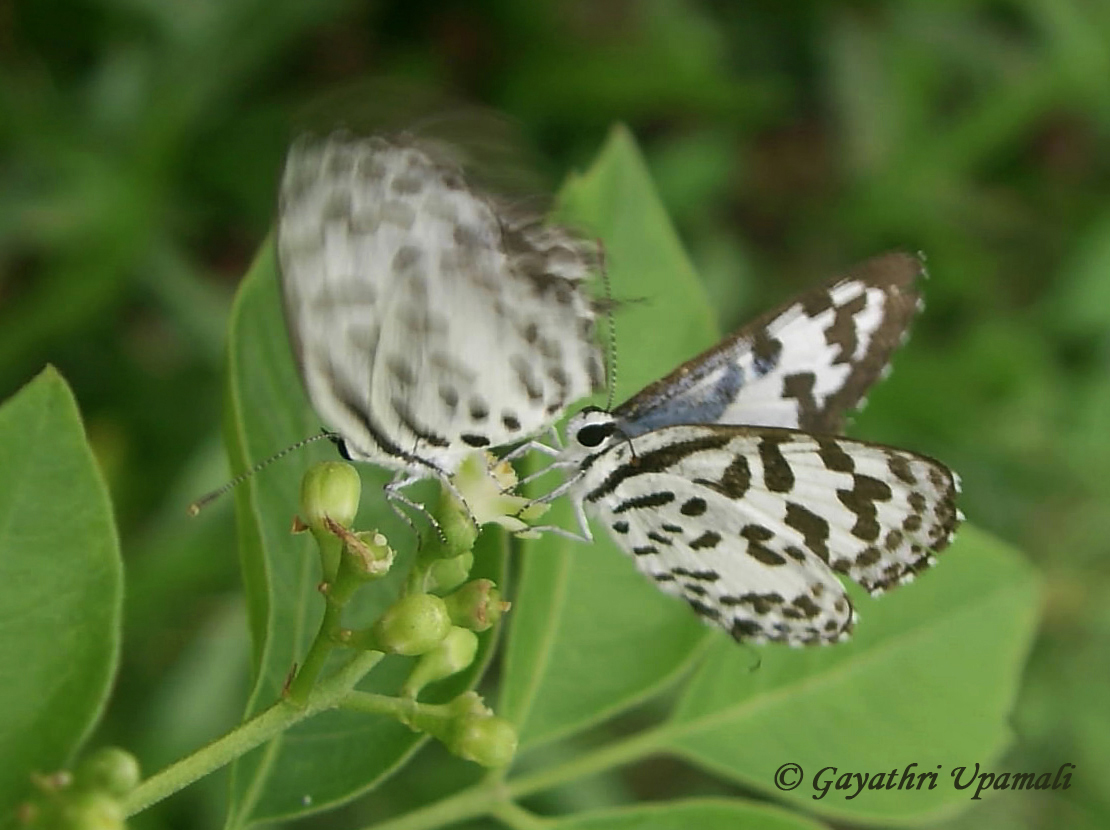Family: Lycaenidae
Genus: Castalius
Species: C. rosimon
Wingspan: 24-32 mm
Local host plant : Ziziphus oenoplia (Rhamnaceae); Heen Eraminiya [S]
Location : Divulapitiya, Sri Lanka
Camera : Nikon D3100, 18-55 mm |
| Common Pierrot on its host plant |
Common Pierrot (Castalius rosimon) is a small butterfly in family Lycaenidae. The butterfly always flies close to the ground with weak flight. Can be commonly found basking on leaves in the morning. Due to its tail pattern being similar to eye shape, the predators are mislead when attacking the butterfly which gives him a chance to survive once more.

It is not common in open areas and does not leave the ground level when flying. Common Pierrot can be seen with several butterflies of similar species flying around the butterfly host plant and nectaring plants. It prefers the nectar plants in ground level, most commonly weeds. It was observed them visiting the flowers of Microcos (Microcos paniculata) as well.
 |
| Common Pierrot nectaring |
 |
| Common Pierrot resting on leaf of its host plant |
Common Pierrot can be often seen resting on perches at ground level. After visiting nectar plants, it usually rest for a while before starting the next journey.
The male Common Pierrot butterfly is usually larger than the female butterfly. Female butterfly has duller shades than the male and the spots on both hindwing and forewing are having brownish color. Male butterfly has clear black spots. On hindwing there are three distinct black spots, on submarginal band which overlaid with metallic blue scaling.
 |
| Common Pierrot male butterfly |
Field observations on courtship and butterfly mating behavior
The male Common Pierrot tries to entice the female butterfly to mate, but the female continuously refuses (rarely accept it at once) it by flapping its wings. Male follows the female as she flies from place to place, visiting nectar plants and perches. When the female butterfly settles on a perch, the male walks near her hindwings and touches the tails with its antennae. This happens repeatedly for hours until the female accepts him.
 |
| Common Pierrot; courtship behavior |
 |
| Female butterfly signaling rejection to male |
Finally, the female butterfly chooses an appropriate spot to start the copulation. Male butterfly is on right side, and is larger than the female. The male butterfly has more pointed shaped forewing than the female.
 |
| Common Pierrot mating pair |
No comments:
Post a Comment